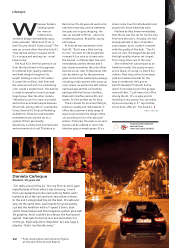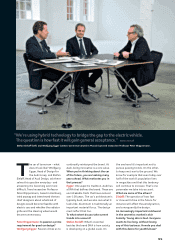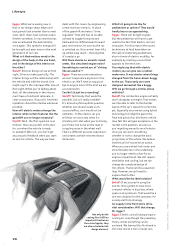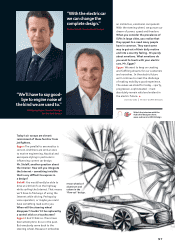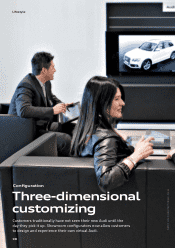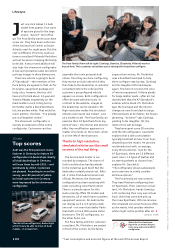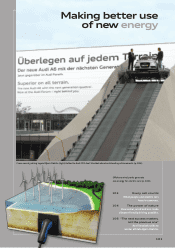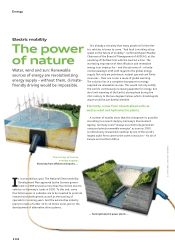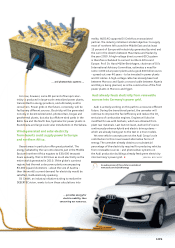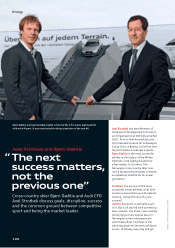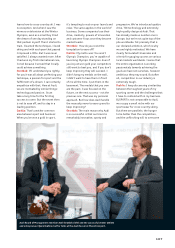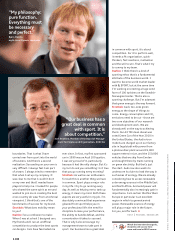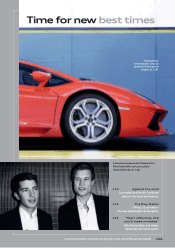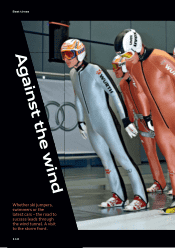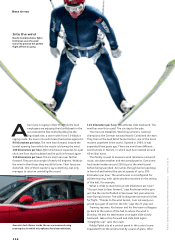Audi 2010 Annual Report Download - page 104
Download and view the complete annual report
Please find page 104 of the 2010 Audi annual report below. You can navigate through the pages in the report by either clicking on the pages listed below, or by using the keyword search tool below to find specific information within the annual report.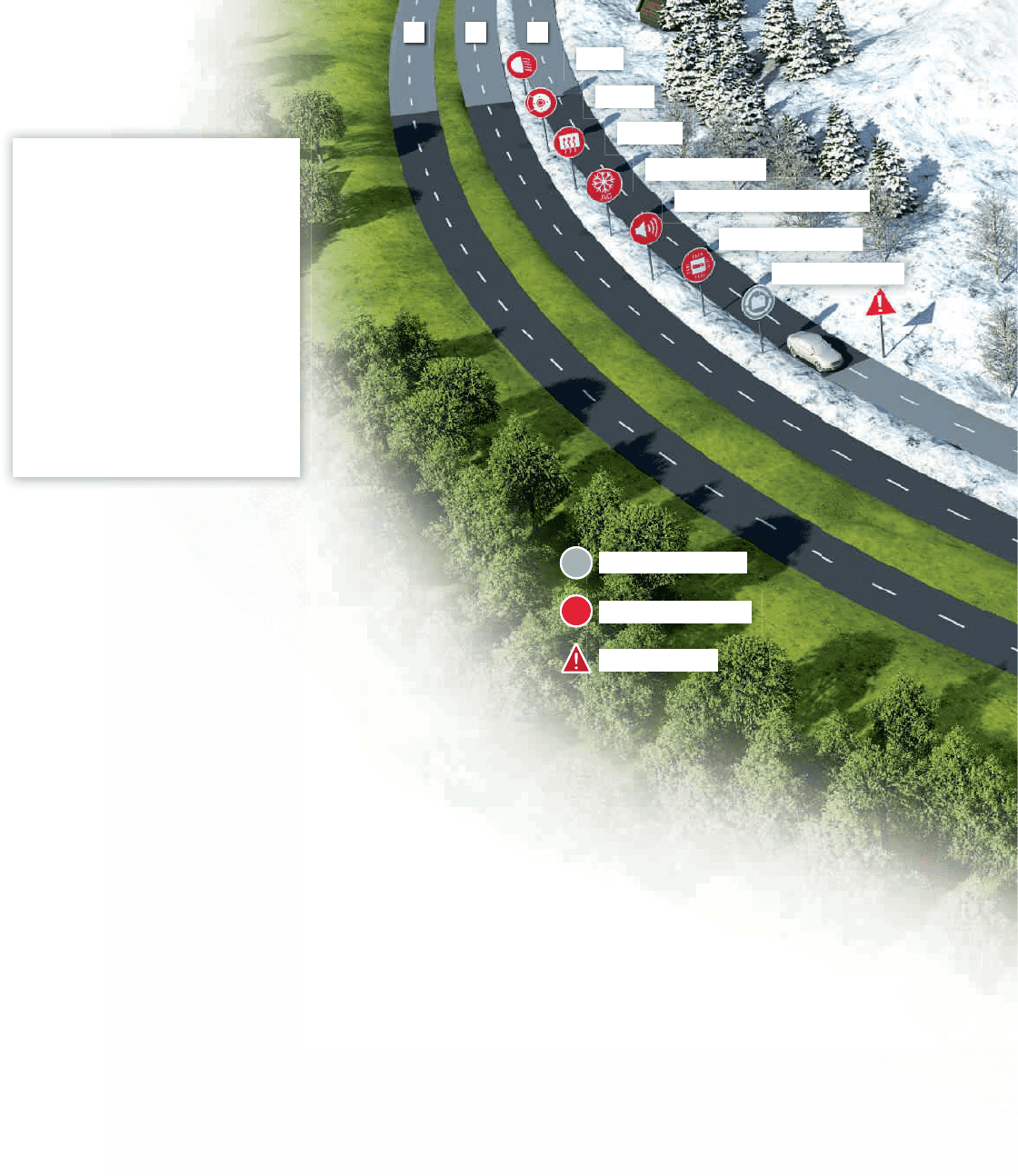
1
2
3
D
rivers of today’s all-electric cars have to do
more than just carefully plan their intended
route. In order to calculate their range, they
also have to account for factors such as
the outside temperature, which is at least as important as
the route when it comes to reaching a destination.
“Many drivers of conventional cars become nervous as
soon as the fuel warning light comes on, even though
the next gas station can’t be all that far away,” says Jens
Kötz, Head of Networking and Energy Systems at AUDI AG.
“But anyone climbing into a fully charged electric car is
essentially running on reserve from the outset,” continues
the engineer.
Confronted with limited battery capacities and scarce
recharging options, Kötz and his team hone the electric
Audi models for maximum effi ciency. Energy consumers such
as the seat heating or air conditioning have to be cut back in
the interest of greater range. “So that you don’t have to off er
more basic concepts, the key to success lies in the intelligent
networking of an electric car,” explains Kötz.
“The incorporation of weather data, route planning, thermal
pre-conditioning, use of comfort and convenience features
and road characteristics adapted to the planned route
ultimately contributes to a signifi cant increase in range.”
Peak torque can be reduced and energy can even be
recovered, for example. The recuperation system feeds
electricity back into the battery during braking. In terms of
intelligent energy management, the effi ciency strategies
of an electric car are comparable to those of a biological
organism. Sophisticated electronics carefully monitor
consumers in a car; in the human body, priorities are set
by the pituitary gland, among other things. When the
body is under stress, this gland tells the adrenal cortex to
secrete cortisol in order to mobilize emergency reserves,
for example.
Flexibility is the key to success
If the battery runs empty on the open road, the Audi A1
e-tron study has a range extender that springs into action.
The compact rotary engine generates energy with which the
vehicle is powered via the electric motor and the cells are
recharged. Strictly speaking, the human body also includes
a type of hybrid system. When push comes to shove and
the blood sugar level is no longer able to meet the muscles’
energy requirements, hormones such as noradrenaline or
glucagon cause the body to burn fat.
A particular challenge with regard to battery manage-
ment: cold temperatures when high performance is wanted.
Every cell counts
There is one thing that electric cars have in common
with humans: Their success depends on using scarce
energy resources as intelligently as possible.
102
Route 1
The range of an electric car
decreases rapidly when the air
conditioning or other consumers
such as the seat heating are
switched on to full power.
Wasteful driving behavior
also has a negative infl uence
on range. And extremely cold
temperatures likewise restrict
battery power signifi cantly.
Range under
extreme conditions
Battery management
Energy
ILLUSTRATION | CHRISTIAN EISENBERG
Lights
Brakes
Heating
Air conditioning
g
Entertainment electronics
Battery electronics
Energy recovery
Positive infl uences
Negative infl uences
Battery empty


